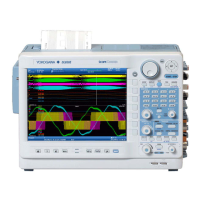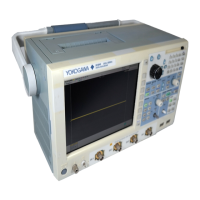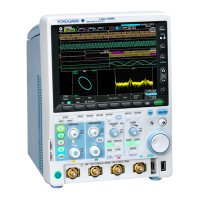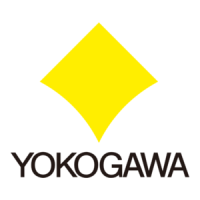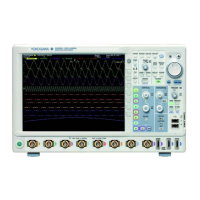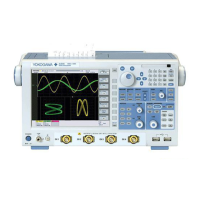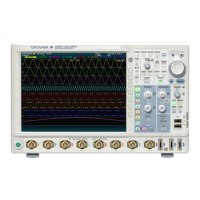1-2
IM 701610-61E
1.2 Connecting the Probe
Input Terminals
Connect the probe to one of the input terminals located at the lower section of the front
panel. The input impedance is 1 MΩ±1.0% and approximately 28 pF.
CH 1 CH 2 CH 3 CH 4
1MΩ 28pF 300V
CAT
WARNING
To prevent fire or electric shock, do not use this instrument for category
II, III, or IV measurements.
CAUTION
The maximum input voltage for 1 MΩ input is 300 VDC or 300 Vrms
when the frequency is 1 kHz or less. Applying a voltage exceeding this
maximum can damage the input section. If the frequency is above 1
kHz, the input section may be damaged even when the voltage is below
this value.
Precautions to Be Taken When Connecting a Probe
• When using the I
2
C-bus trigger function, apply the SCL (serial clock) signal and SDA
(serial data) signal to the CH1 and CH2 input terminals, respectively.
• When connecting a probe to the instrument for the first time, perform phase correction
of the probe as described in section 3.5, “Compensating the Probe (Phase
Correction)” in the
DL1620/DL1640/DL1640L User’s Manual IM 701610-01E
. Failure
to do so may result in unstable gain across different frequencies, thereby preventing
correct measurement. Calibration must be performed for each channel.
• Note that if the object being measured is directly connected to the instrument without
using a probe, correct measurements may not be possible due to loading effects.
Note
The data analysis function and the data search function of the I
2
C bus can be used against
the CH3 and CH4 signals. For details, see section 1.5, “Analyzing/Searching Data.”
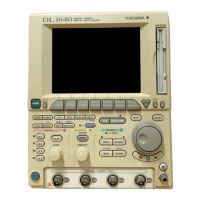
